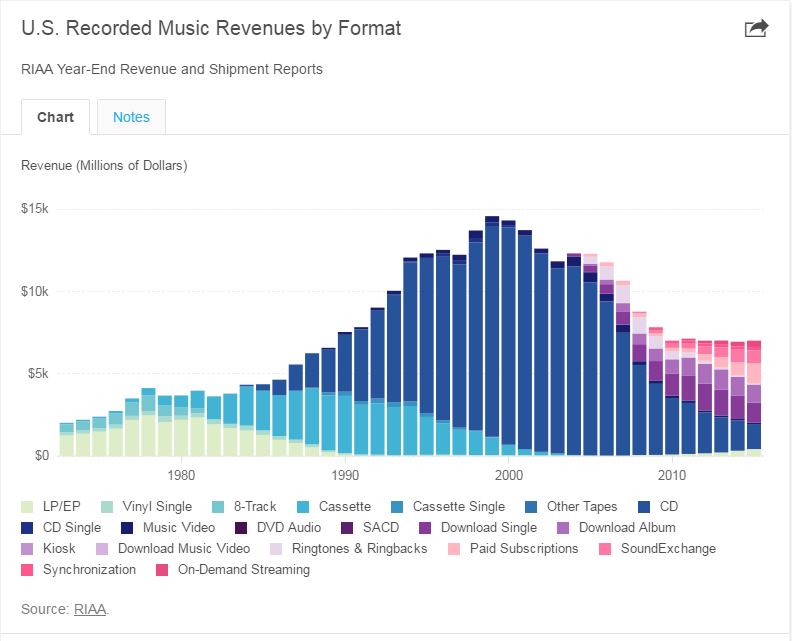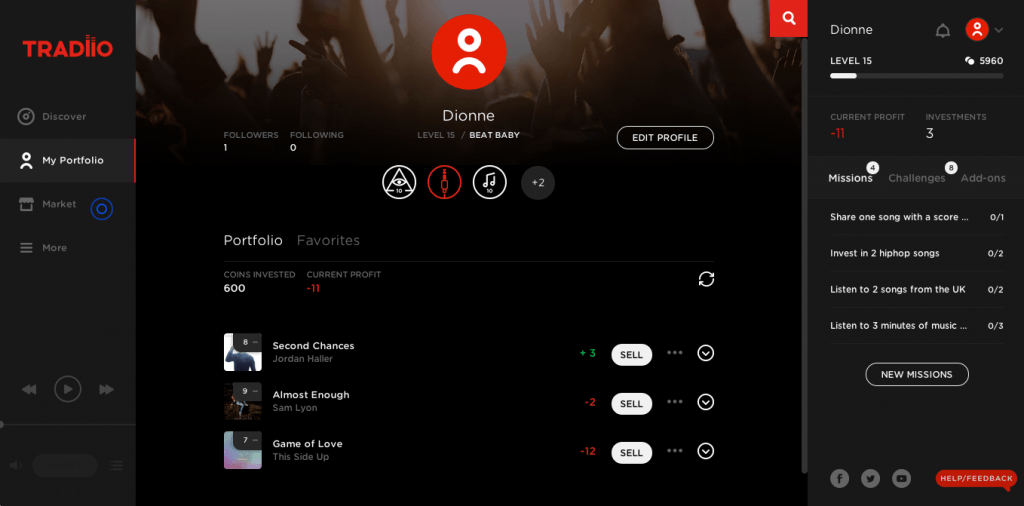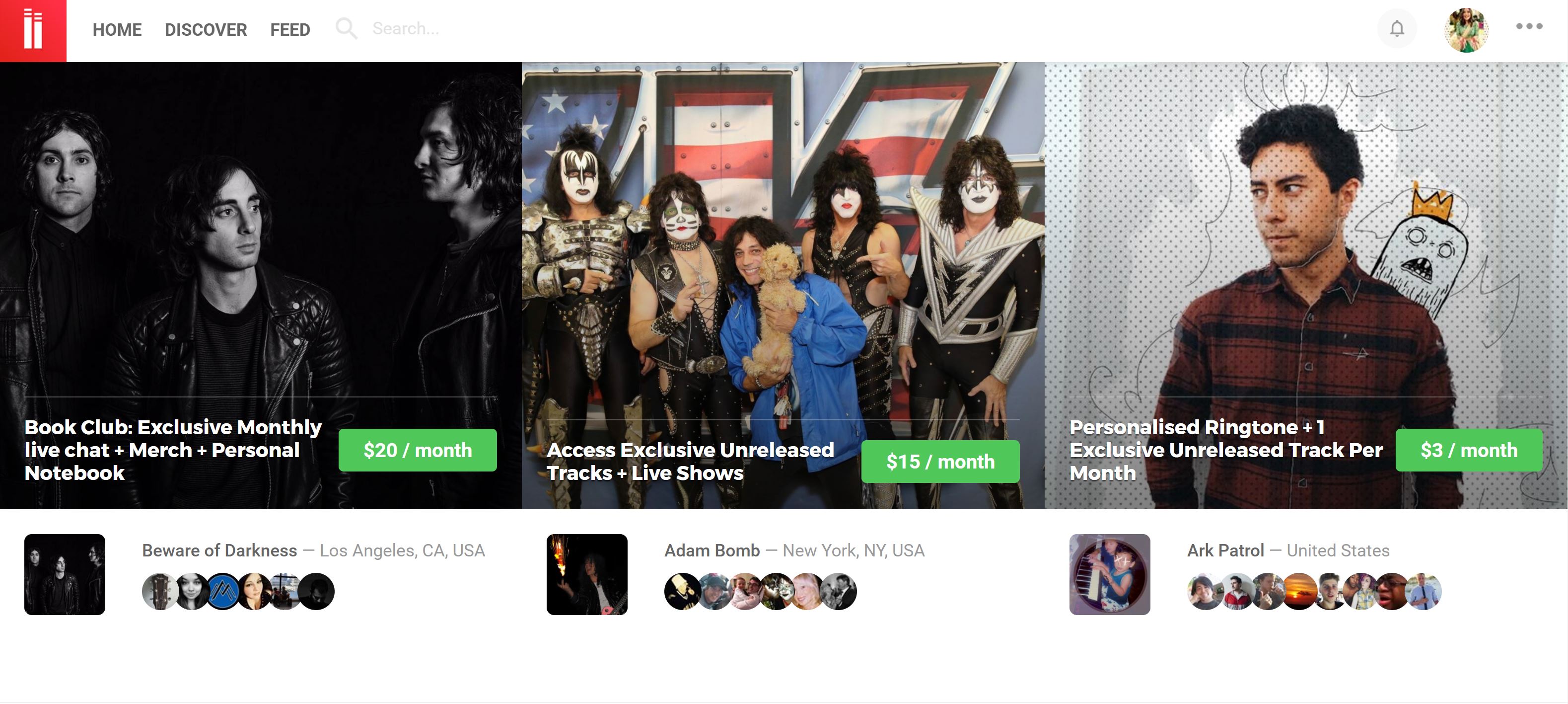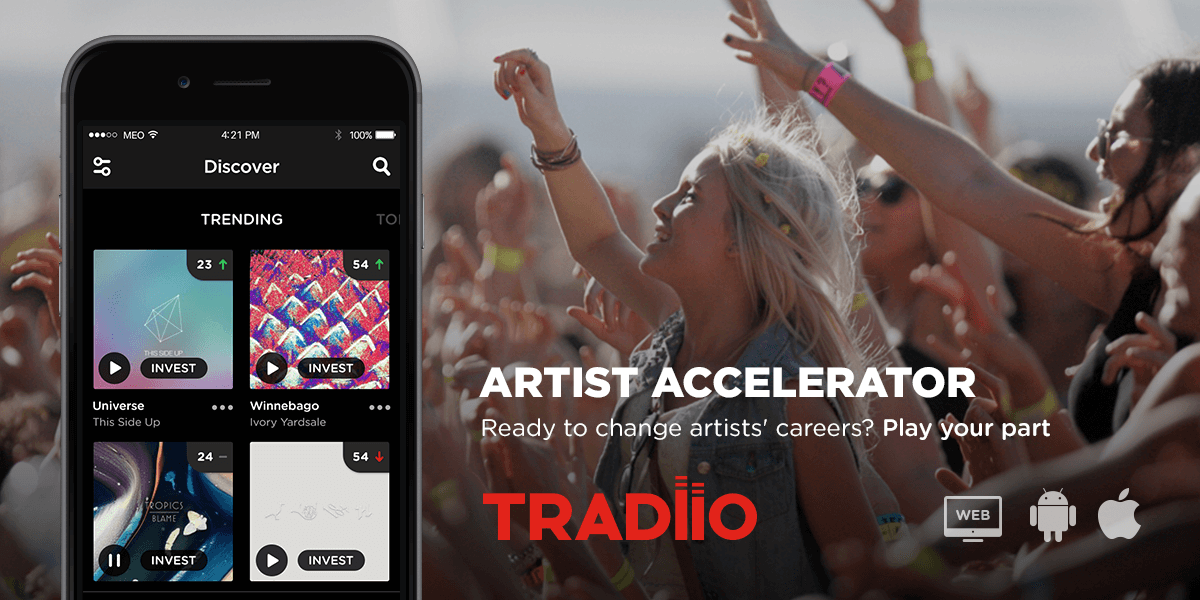Tradiio – Experimenting with Crowds in the Music Industry

This is the story of Tradiio, a music startup that launched as a crowdsourced virtual stock market for emerging artists and later pivoted to become a direct-to-fan crowdfunding platform.
The music industry is struggling to find a business model for the digital era that balances fan access to material with appropriate artist compensation. The rapidly changing industry has become a testing ground for new ideas, technologies, and platforms like Tradiio, a Portuguese music startup founded in 2014 by a Universal Music label manager, an innovation consultant, and a serial entrepreneur. Tradiio has always billed itself as an “artist accelerator” designed to help emerging artists build connections with their fans, gain credibility, and earn money for their art. However, it switched from a crowdsourced A&R model where fans invested virtual currency in their favorite artists to a direct-to-fan crowdfunding model where fans pay a monthly subscription fee to their favorite artists in exchange for access to special rewards. This post explores both models and the challenges that they face.
Tradiio Then: A Musical Stock Market
 The music industry is slowly recovering after years of decline due to piracy and falling prices thanks to growth of paid streaming services like Spotify and Apple Music. U.S. streaming revenue grew 57 percent to $1.6 billion in the first half of 2016 and accounted for almost half of industry sales (i).
The music industry is slowly recovering after years of decline due to piracy and falling prices thanks to growth of paid streaming services like Spotify and Apple Music. U.S. streaming revenue grew 57 percent to $1.6 billion in the first half of 2016 and accounted for almost half of industry sales (i).
However, some successful artists like Taylor Swift claim that many of the larger platform streaming services do not properly compensate them for their music; many smaller artists also complain that these platforms do not serve emerging musicians. The advent of streaming and social media have also resulted in an extremely crowded digital music space. Countless new channels for artists to promote their music have popped up and it’s never been easier to put music online as an artist or to access music as a fan. With this plethora of options, however, it’s become much harder for new artists to cut through the noise and make it big as they are faced with competition on a global scale.
Tradiio was launched as a rewards-based music discovery platform designed to solve these problems through a model of crowdsourced artist development. Unlike Spotify and other streaming services that offered passive listening, Tradiio allowed users to listen to and virtually invest in up-and-coming artists. In turn, artists who rose to the top of the Tradiio Chart received benefits including festival slots, record label connections, and access to studio time. On top of this, the most successful users at spotting new talent received recognition from peers and the chance to earn rewards like exclusive perks, products, and experiences.
In a sense, Tradiio was replacing traditional A&R (artists & repertoire, the division of record labels that oversees the artist development process) with crowdsourced A&R by leveraging the collective intelligence from a large number of users (new-age talent scouts) in curating the top talent from a large number of submissions (ii). This double-sided platform model claimed to align the interest of artists and fans by making consumer engagement a key component of the artist development process.
Initially, Tradiio operated as a musical stock-market: fans invested virtual coins in their favorite tracks, developed their own portfolios of songs and artists, and earned or lost money based on how well their artists performed on the Tradiio Chart. Users could also gain more coins by exploring different parts of the service and fulfilling various “missions” like ‘listen to two hip-hop songs’ or ‘share a song’. The platform was free for fans and artists but Tradiio did introduce “Tradiio Pass,” a paid membership which featured an enhanced experience with more virtual currency, access to the newest music on the platform, and exclusive items in the Store.

There are many challenges associated with Tradiio’s original business model. First, it relied on a very engaged and active user base since the service was a fairly involved experience compared to lean-back music discovery platforms like Pandora and Spotify. While attracting only the most engaged users might have benefits from a differentiation standpoint, I think Tradiio was at a huge disadvantage acquiring users and scaling their service since it didn’t cater to most users out there who just want to listen to songs. Second, the quality of A&R from a small user base may not have been as great as expected, resulting in fewer successful artists and potentially lower supply on the artist side as musicians devoted their time to other music and social media platforms. Third, since Tradiio offered most rewards to the most successful artists for free, I suspect that they had a very hard time capturing value and turning a profit.
Tradiio Now: Monthly Income for Musicians
In 2016 Tradiio switched from a crowdsourced A&R model to a model based on direct-to-fan crowdfunding. The new Tradiio blends crowdfunding and music streaming with the mission of generating sustained, ongoing funding for musicians – like the old fan club model, but updated for the digital age. Musicians can create a subscription page and be supported on a monthly basis by fans who get access to exclusives and experiences in return. Levels of support range from $1 to $100 a month, including everything from Snapchat shoutouts to monthly 15 minute private Skype calls.

Despite the pivot in business models, the themes of helping emerging artists succeed and building engagement between artists and fans remain constant. In the video below, Tradiio claims that artists generated more than 500 euros a month on the platform after three months and showcases an artist who made more money after three months on Tradiio than after a whole year of radio and streaming combined. Tradiio in turn makes money by taking 10% of the artists’ subscription revenue from fans.
The reasons behind dropping the stock market functionality and moving towards direct funding are not public, but there is some evidence that Tradiio planned to switch over from a marketplace of virtual currency to real money all along, as seen in a 2015 interview with one of Tradiio’s marketing managers (iii). My opinion is that moving to this new model made operations more efficient, profitable, and scalable for Tradiio. Previously, Tradiio was responsible for maintaining the virtual stock market and distributing rewards to fans as well as successful artists; now, artists are 100% in control of the rewards and their distribution to fans, eliminating Tradiio’s role as a middleman and reducing complexity. The platform is also set-up for recurring funding, generating a reliable stream of commissions from artist’s earnings. Additionally, I suspect that Tradiio’s experiments in A&R, including starting its own record label to support emerging artists, failed and that the founders preferred positioning the platform as a new revenue stream in the music industry over attempting to develop artists themselves.
Looking ahead, Tradiio expects direct fan funding to become a major trend in the music industry and aims to close Series A funding by Q4 of 2017. Its 10% commission is low compared to the cuts taken by traditional music labels; however, it faces competition in music crowdfunding from companies like PledgeMusic, Sell A Band, artistShare, Kickstarter, Indiegogo, Your Music Company, and dozens of others that offer similar services (iv). Differentiation in such a crowded space will be difficult and Tradiio plans to generate awareness in the US and UK by closing partnerships with influential brands and getting endorsements from successful artists. Fan funding in general has its challenges: people are only willing to pay what a product is worth to them, not what it costs to produce. Musicians, marketers, and music labels are all working very hard to come up with new experiences that consumers are willing to pay for given that free music has become such a staple of the digital age. It remains to be seen whether Tradiio’s new model will ultimately succeed, but the entire music industry and I will be watching closely to find out.
Sources
i. Bloomberg. https://www.bloomberg.com/news/articles/2016-09-20/spotify-apple-drive-u-s-music-industry-s-8-first-half-growth
iii. OK, INTRNT. http://www.okintrnt.com/game-changers/tradiio-music-emerging-artists/
iv. Crowd Crux. http://www.crowdcrux.com/6-top-crowdfunding-sites-for-artists-and-bands/



